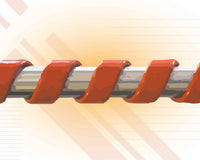Originally published on ManufacturedHomes.com by Ben Nelms.
Sitting here in Southern California writing an article about prepping your manufactured home for the winter may seem a little silly; however, in many places across the country, where the winter weather can be severe, it is important that homeowners take precautionary steps in order to prepare and protect their homes from the cold and freezing temperatures.
Preparing your manufactured home for winter is not much different than that of a home built on site. However, there are some preparation and maintenance tips listed below that may be unique to a manufactured home.The following items are merely suggestions for maintaining your home and you should always consult your manufactured home owner’s manual for specific instructions.
1.Skirting should be installed per the manufacturer’s instructions, keeping in mind to allow adequate ventilation so that odor or condensation problems do not occur. Make sure all drain lines from air conditioner, heat pump, etc drain to outside of home skirting.
2. Close all access points in skirting to keep rodents and other wild animals from living under your home.
3. Adjust storm door closures for proper closing action and latch function to prevent excessive air infiltration.
4. Vent the clothes dryer directly outside the home. Improper venting will contribute to major condensation problems in the home.
5. Water lines should be protected by wrapping them first with an approved heat cable. Install the heat cable per the manufacturer’s instructions, which may vary according to the type of water riser in place. At the beginning of cold weather, check to be sure heat tapes are plugged in and in good working condition. If you are planning on being away for an extended period of time, it is best to shut off water supply completely.
6. Sewer lines should be installed to allow proper angle for good drainage. If your sewer line has any sag or low spots, tie the line up to the frame or place a block underneath. Water will lie in these low spots and freeze.
7. Furnace filters should be installed and cleaned regularly (monthly) as air cannot pass through a dirty filter thereby increasing your operating costs.
8. Check for ice or snow buildup around your furnace or water heater roof caps. It is important to keep this area open to provide for proper operation.
9. During periods of severe cold, leave cupboard and closet doors open at night and when you are away so that heat may circulate in these otherwise cold areas.
10. Avoid pouring small amounts of liquid into sinks and toilets, as a small amount of liquid by itself may freeze in your drain in severe cold weather. Do not leave a small stream of water running from the faucet as this may cause sewer lines to freeze.
11. Check the underside of your home for any holes in the belly board. Be sure all heat registers are in working order and sealed. Replace any inoperative or damaged registers.
12. On multi-section homes, make sure crossover pipe is installed to both halves of the home and are in good working condition. There should be no holes and no water in this pipe and it should be fully insulated.
13. Check to be sure heat tapes are plugged in and in good working condition.
14. Fix all plumbing leaks to keep sewer line from freezing. Sometimes toilet tank leaks can be small and unobservable. To check tank for leak, tie the float up in the evening; and if the tank is lower in the morning, you will know that you have a leak.
15. Keep any fuel tanks as full as possible to avoid freezing.
16. Unhook garden hoses in order to allow freeze-proof faucets to drain.
Your manufactured home manual will give you other tips that can be helpful in not only preventing costly repairs associated with freezing, but also to enhance the energy efficiency of your home.






